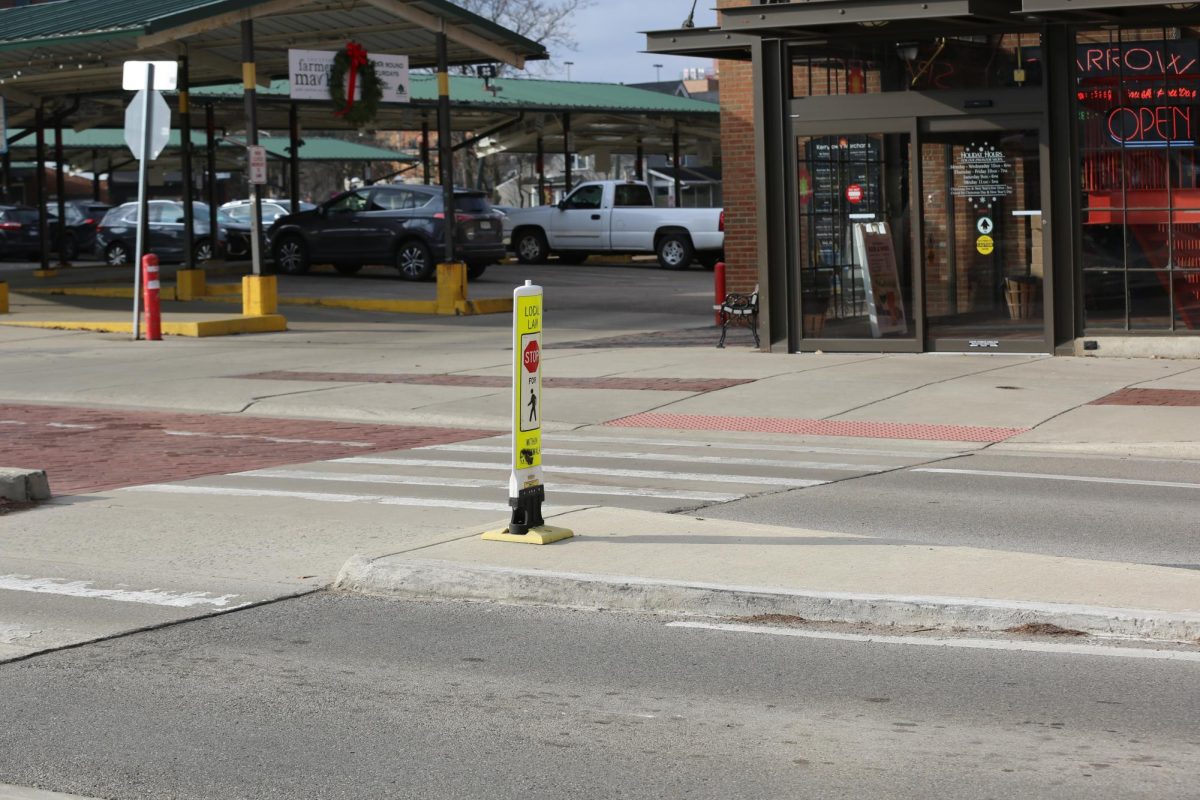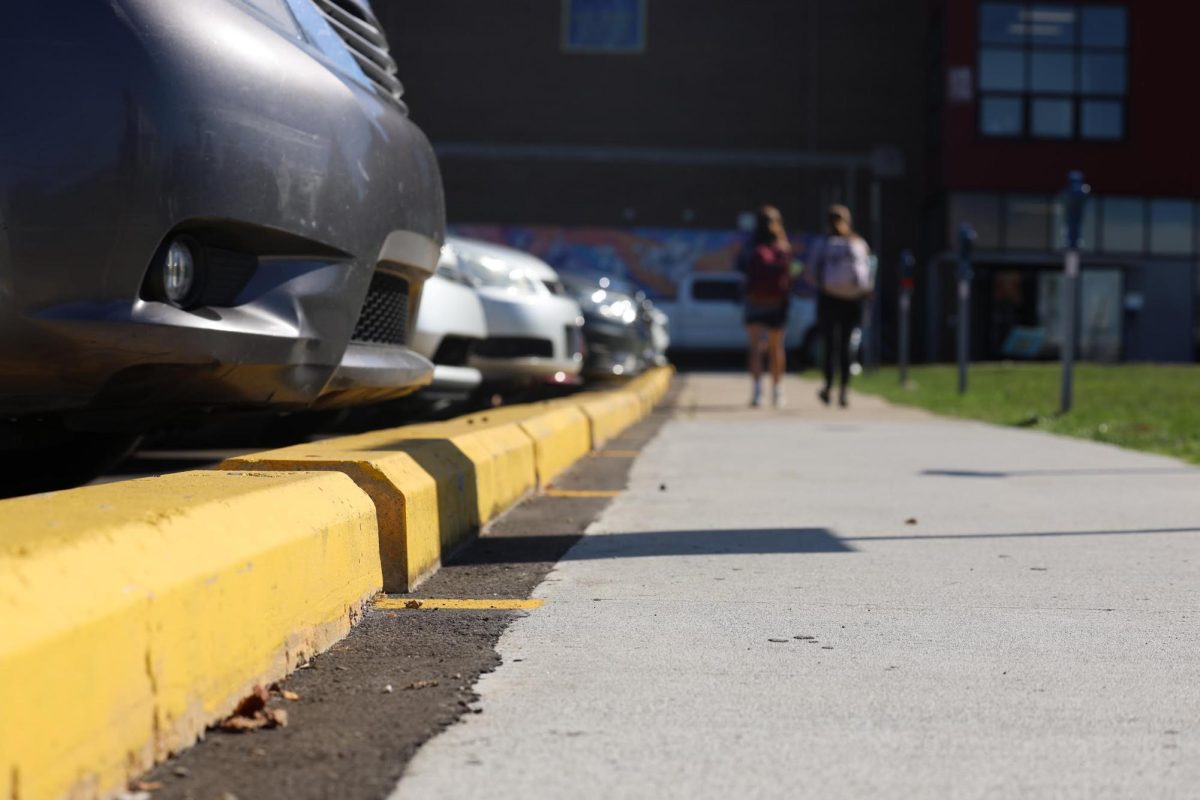At least by the time they graduate, almost every Community student has walked over to Kerrytown for something or other. It’s a natural walk, as it’s right across the street. There are three crosswalks to choose from on your way, all of which are incredibly effective.
By effective, I mean they do their job. A crosswalk’s job is for pedestrians to be able to safely cross a street without fear of being hit by a car, yet most crosswalks in Ann Arbor do not do this job properly. Without a traffic signal, cars in Ann Arbor are legally required to stop at every crosswalk where a pedestrian is waiting, and most cars do not follow this rule even with signage. If there is no guarantee that a car will stop as you are crossing, there is no guarantee that you will be safe in a crosswalk, and it has failed at its job.
There is likely no way to completely solve this problem and make every car stop for pedestrians every time, however, many attempted solutions exist. Personally, I have seen and used many of them, and yet every crosswalk I have used in Ann Arbor is less effective than the ones connecting CHS and Kerrytown. Almost every single time, on each of the three crosswalks, a car will stop completely for those trying to cross.
Why is this? These crosswalks have no special signage or fancy flashing lights, so what about them convinces the cars to stop?
I believe the main factor in this is how the crosswalks are separated from the street and not treated as just a crossing. All three crosswalks on Fifth Street in front of Kerrytown are not only plainly colored differently from the street, they are a different pavement as well. These things both imply that the crosswalk is a space where cars intrude on pedestrians instead of the other way around. The change in pavement also provides a textural difference that solidifies the crosswalks as unconnected to the street. The clear separation makes it obvious where cars are supposed to stop, which also means no stop lines are required before the crosswalk to prevent the vehicle from going too far.
Using this example of how effective clearly separating a crosswalk from the street is for making drivers follow the law, what if we took it a step further?
Raised sidewalks have been implemented in a few U.S. cities, and they are common in some places like the U.K. and Sweden. The idea is that by keeping the crosswalk at grade with the sidewalk, more attention is brought to the location of the crosswalk. It also acts as a speed bump to slow cars down when approaching, which makes the driver far more likely to stop for someone trying to cross.
Some problems with the solution of raised crosswalks do exist. The cost of a raised crosswalk is generally significantly greater than a plain striped crosswalk, but compared to the average high-visibility crosswalk, the cost can actually be lower depending on the style of raised crosswalk. Raised crosswalks can also cause drainage problems, problems with snowplowing, and problems with public transportation (such as buses). For Ann Arbor, however, I believe that the majority of crosswalks would not need a very high level to be effective, and would thus not pose a large issue for any of these potentials.
Raised sidewalks are not the only solution to the problem of how to cross the street safely, and there are likely hundreds of ways to make cities more walkable and pedestrian-friendly. However, I believe that raised sidewalks are still, if not the best solution, at the very least a reasonable one for downtown Ann Arbor. Implementing infrastructure like this would greatly improve the safety of pedestrians in Ann Arbor, and would encourage people to walk more, which is better for the environment as well as the economy.
More efforts should be made to implement reliable, walkable infrastructure in downtown Ann Arbor to improve the safety of our citizens, environment and economy, and we can start with raised crosswalks.










